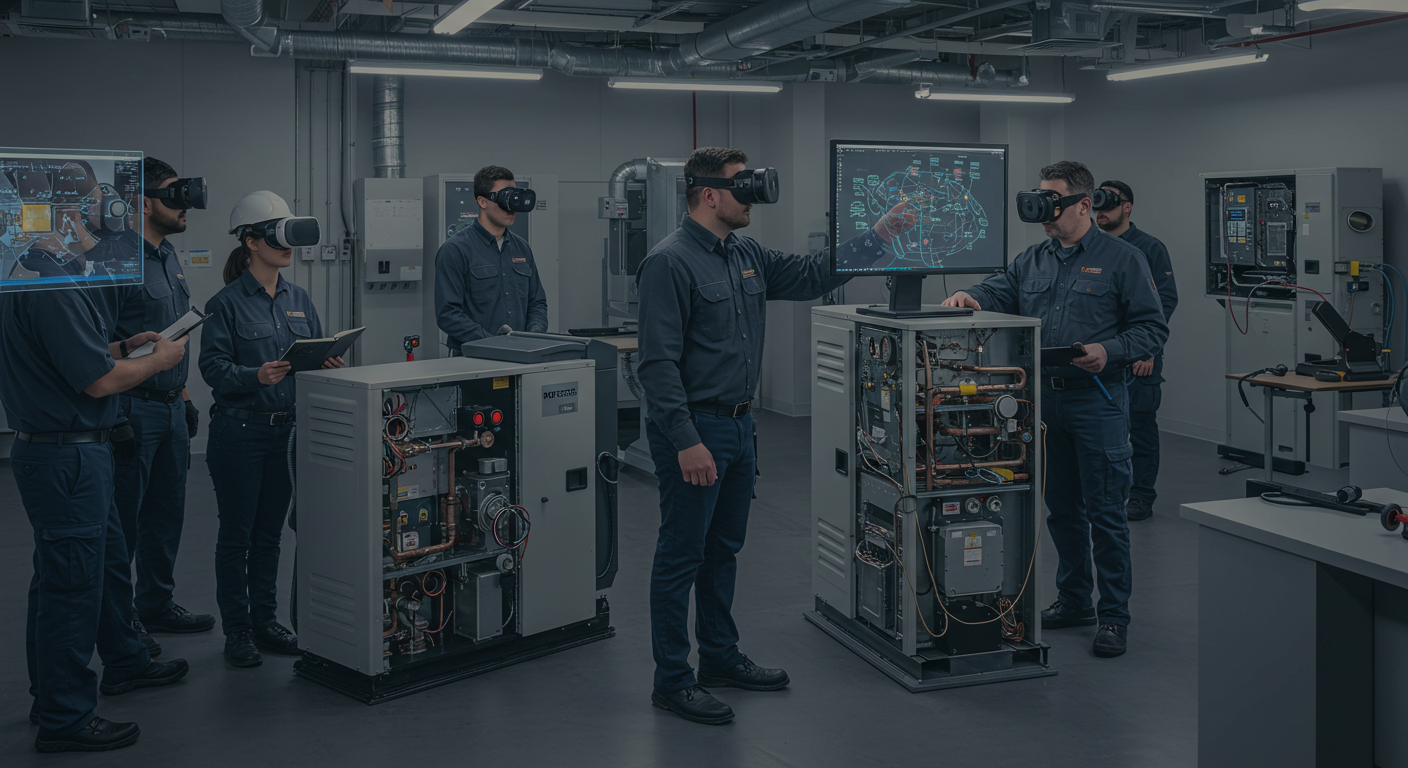
How to Structure an Internal HVAC Training Program
In the ever-evolving HVAC industry, creating a robust internal training program is essential for staying competitive. With the industry’s projected growth and the increasing demand for skilled technicians, now is the time to invest in training that equips your team with the necessary skills and knowledge. This guide will help you understand how to structure an effective internal HVAC training program.
Understanding the Core Components of HVAC Training
To build a successful training program, it’s crucial to focus on the core components of HVAC education. Your program should cover:
- HVAC system fundamentals
- Electrical theory and refrigeration principles
- Component diagnostics, including compressors, condensers, and evaporators
- Installation, maintenance, and building codes
- Safety protocols
Advanced training can include energy-efficient technologies, ductwork design, airflow calculations, and troubleshooting. Partnering with brands like Daikin for specialized training on advanced systems can prepare your team for current and future industry standards.
Choosing the Right Delivery Methods
Effective training programs blend classroom instruction with hands-on labs and real-world experience. Incorporating digital tools such as virtual simulations and mobile learning platforms can enhance engagement and keep your team updated with rapidly changing technologies.
Building Career Pathways and Retention Strategies
Retention of skilled technicians is as important as training them. Creating clear career roadmaps and encouraging personal development can boost retention rates. Encourage technicians to go the extra mile in customer interactions, which can enhance service quality and job satisfaction.
Addressing Cost and Regulatory Considerations
While training programs can range in cost, the return on investment is worthwhile given the industry’s growth and earning potential. Ensure your program includes compliance with local building codes, refrigerant handling regulations, and safety standards to mitigate risks and ensure legal operations.
FAQs on Structuring an Internal HVAC Training Program
What is the typical duration of an HVAC training program?
Training programs can vary from 6–12 months for certificates, 18–24 months for associate degrees, and 3–5 years for apprenticeships.
What topics should an HVAC training program cover?
Core topics include HVAC fundamentals, electrical theory, refrigeration principles, diagnostics, installation, maintenance, and safety protocols.
How can digital tools enhance HVAC training?
Digital tools such as virtual simulations and mobile learning platforms can increase engagement and help technicians adapt to new technologies.
Why is it important to focus on retention strategies in HVAC training?
Retention strategies help maintain a skilled workforce, improve service quality, and ensure a return on investment in training programs.
How do regulatory compliance and costs affect HVAC training?
Compliance with regulations ensures legal operation, while understanding costs helps in budgeting for a program that offers long-term benefits.
Structuring an internal HVAC training program is not just about imparting technical skills; it’s about preparing your team for the future. By investing in comprehensive training, you ensure your technicians are ready to meet industry demands and excel in their careers.
Ready to take the next step? Start building your internal HVAC training program today and watch your team thrive!

